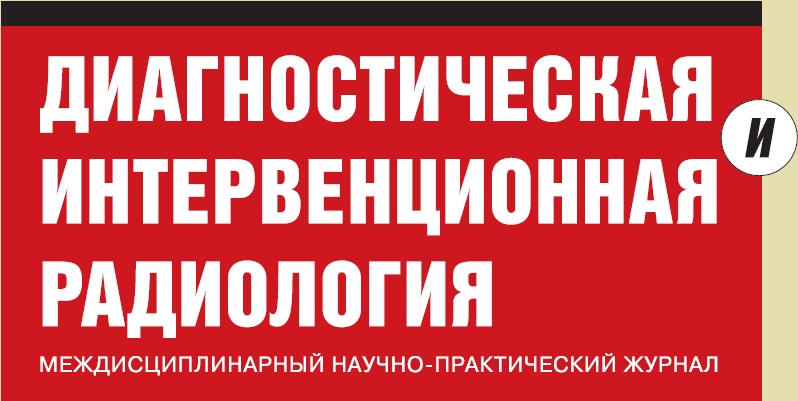Аннотация: Введение: объемные показатели левого предсердия (ЛП) в разные фазы сердечного цикла могут быть использованы для оценки функции ЛП до и после катетерной аблации (КА). Увеличение фракции выброса (ФВ) ЛП может являться более ранним и чувствительным «индикатором» процесса обратного ремоделирования, чем объем ЛП и служить предиктором эффективности КА. Цель: оценить волюметрические показатели и функции ЛП до и после выполнения крио- и радиочастотной катетерной аблации ЛВ у пациентов с пароксизмальной формой ФП. Материалы и методы: в исследование были включены 21 пациент с пароксизмальной формой фибрилляции предсердий. Всем пациентам была проведена мультиспиральная компьютерная томография (МСКТ) легочных вен (ЛВ) и ЛП перед КА, и через 12±2 месяца после КА. Для оценки функции ЛП были использованы трехмерные модели в фазы сердечного цикла 0%, 40%, 75%. Результаты: максимальный объем ЛП перед КА был незначительно больше в группе пациентов, с рецидивом КА (124,52±38,22 мл vs. 117,89±23,94 мл, p>0,05). После КА, у пациентов, сохранивших синусовый ритм, объемы незначительно уменьшились (LA max 115,31±20,13мл, p>0,05, LA min 73,43±14,91 мл, p>0,05), при этом увеличились у пациентов с рецидивом ФП (LA max 130,88±25,20 мл, p<0,05, LA min до 94,92±31,75 мл, p<0,05). Общая фракция выброса ЛП была меньше в группе пациентов, сохранивших синусовый ритм (22,37%±4,69 vs. 31,31%±9,89, p=0,013), однако после КА она значительно увеличилась, при этом в группе пациентов с рецидивом ФП практически не изменилась (36,54%±3,27 vs. 28,89%±9,41, p=0,011). Заключение: в группе пациентов, сохранивших синусовый ритм, отмечается улучшение механической функции левого предсердия. В группе пациентов с рецидивом фибрилляции предсердий значительных анатомических и функциональных изменений не выявлено.
Список литературы 1. Lippi G., Sanchis-Gomar F., Cervellin G. Global epidemiology of atrial fibrillation: An increasing epidemic and public health challenge. Int J Stroke. 2021; 16(2): 217-221. https://doi.org/10.1177/1747493019897870 2. Hindricks G., Potpara T., Dagres N., et al. 2020 ESC Guidelines for the diagnosis and management of atrial fibrillation developed in collaboration with the European Association for Cardio-Thoracic Surgery (EACTS). Eur Heart J. 2021; 42(5): 373-498. https://doi.org/10.1093/eurheartj/ehaa612 3. Hindricks G., Sepehri Shamloo A., Lenarczyk R., et al. Catheter ablation of atrial fibrillation: current status, techniques, outcomes and challenges. Kardiol Pol. 2018; 76(12): 1680-1686. https://doi.org/10.5603/KP.a2018.0216 4. Артюхина Е.А., Ревишвили А.Ш. Новые технологии в лечении нарушений ритма сердца. Высокотехнолог. медицина. 2017; 1:7-15. 5. Darby A.E. Recurrent Atrial Fibrillation After Catheter Ablation: Considerations For Repeat Ablation And Strategies To Optimize Success. J Atr Fibrillation. 2016; 9(1): 1427. https://doi.org/10.4022/jafib.1427 6. Murray M.I., Arnold A., Younis M., et al. Cryoballoon versus radiofrequency ablation for paroxysmal atrial fibrillation: a meta-analysis of randomized controlled trials. Clin Res Cardiol. 2018; 107(8): 658-669. https://doi.org/10.1007/s00392-018-1232-4 7. Kuck K.H., Brugada J., F?rnkranz A., et al. Cryoballoon or Radiofrequency Ablation for Paroxysmal Atrial Fibrillation. N Engl J Med. 2016; 374(23): 2235-2245. https://doi.org/10.1056/NEJMoa1602014 8. Mathew S.T., Patel J., Joseph S., et al. Atrial fibrillation: mechanistic insights and treatment options. Eur J Intern Med. 2009; 20(7): 672-81. https://doi.org/10.1016/j.ejim.2009.07.011 9. Vasamreddy C.R., Lickfett L., Jayam V.K., et al. Predictors of recurrence following catheter ablation of atrial fibrillation using an irrigated-tip ablation catheter. J Cardiovasc Electrophysiol. 2004; 15(6): 692-697. https://doi.org/10.1046/j.1540-8167.2004.03538.x 10. Tops L.F., Bax J.J., Zeppenfeld K., et al. Effect of radiofrequency catheter ablation for atrial fibrillation on left atrial cavity size. Am J Cardiol. 2006; 97(8): 1220-1222. https://doi.org/10.1016/j.amjcard.2005.11.043 11. Tsao H.M., Hu W.C., Wu M.H., et al. The impact of catheter ablation on the dynamic function of the left atrium in patients with atrial fibrillation: insights from four-dimensional computed tomographic images. J Cardiovasc Electrophysiol. 2010; 21(3): 270-277. https://doi.org/10.1111/j.1540-8167.2009.01618.x 12. Abhayaratna W.P., Seward J.B., Appleton C.P., et al. Left atrial size: physiologic determinants and clinical applications. J Am Coll Cardiol. 2006; 47(12): 2357-2363. https://doi.org/10.1016/j.jacc.2006.02.048 13. Hoit B.D. Left atrial size and function: role in prognosis. J Am Coll Cardiol. 2014; 63(6): 493-505. https://doi.org/10.1016/j.jacc.2013.10.055 14. Costa F.M., Ferreira A.M., Oliveira S., et al. Left atrial volume is more important than the type of atrial fibrillation in predicting the long-term success of catheter ablation. Int J Cardiol. 2015; 184: 56-61. https://doi.org/10.1016/j.ijcard.2015.01.060 15. Avelar E., Durst R., Rosito G.A., et al. Comparison of the accuracy of multidetector computed tomography versus two-dimensional echocardiography to measure left atrial volume. Am J Cardiol. 2010; 106(1): 104-109. https://doi.org/10.1016/j.amjcard.2010.02.021 16. K?hl J.T., L?nborg J., Fuchs A., et al. Assessment of left atrial volume and function: a comparative study between echocardiography, magnetic resonance imaging and multi slice computed tomography. Int J Cardiovasc Imaging. 2012; 28(5): 1061-1071. https://doi.org/10.1007/s10554-011-9930-2 17. Hof I., Chilukuri K., Arbab-Zadeh A., et al. Does left atrial volume and pulmonary venous anatomy predict the outcome of catheter ablation of atrial fibrillation? J Cardiovasc Electrophysiol. 2009; 20(9): 1005-1010. https://doi.org/10.1111/j.1540-8167.2009.01504.x 18. Abecasis J., Dourado R., Ferreira A., et al. Left atrial volume calculated by multi-detector computed tomography may predict successful pulmonary vein isolation in catheter ablation of atrial fibrillation. Europace. 2009; 11(10): 1289-1294. https://doi.org/10.1093/europace/eup198 19. Amin V., Finkel J., Halpern E., et al. Impact of left atrial volume on outcomes of pulmonary vein isolation in patients with non-paroxysmal (persistent) and paroxysmal atrial fibrillation. Am J Cardiol. 2013; 112(7): 966-970. https://doi.org/10.1016/j.amjcard.2013.05.034 20. Lemola K., Sneider M., Desjardins B., et al. Effects of left atrial ablation of atrial fibrillation on size of the left atrium and pulmonary veins. Heart Rhythm. 2004; 1(5): 576-581. https://doi.org/10.1016/j.hrthm.2004.07.020 21. Park M.J., Jung J.I., Oh Y.S., et al. Assessment of the structural remodeling of the left atrium by 64-multislice cardiac CT: comparative studies in controls and patients with atrial fibrillation. Int J Cardiol. 2012; 159(3): 181-186. https://doi.org/10.1016/j.ijcard.2011.02.053 22. Lemola K., Desjardins B., Sneider M., et al. Effect of left atrial circumferential ablation for atrial fibrillation on left atrial transport function. Heart Rhythm. 2005; 2(9): 923-928. https://doi.org/10.1016/j.hrthm.2005.06.026 23. Perea R.J., Tamborero D., Mont L., et al. Left atrial contractility is preserved after successful circumferential pulmonary vein ablation in patients with atrial fibrillation. J Cardiovasc Electrophysiol. 2008; 19(4): 374-379.

Сайт предназначен для врачей







